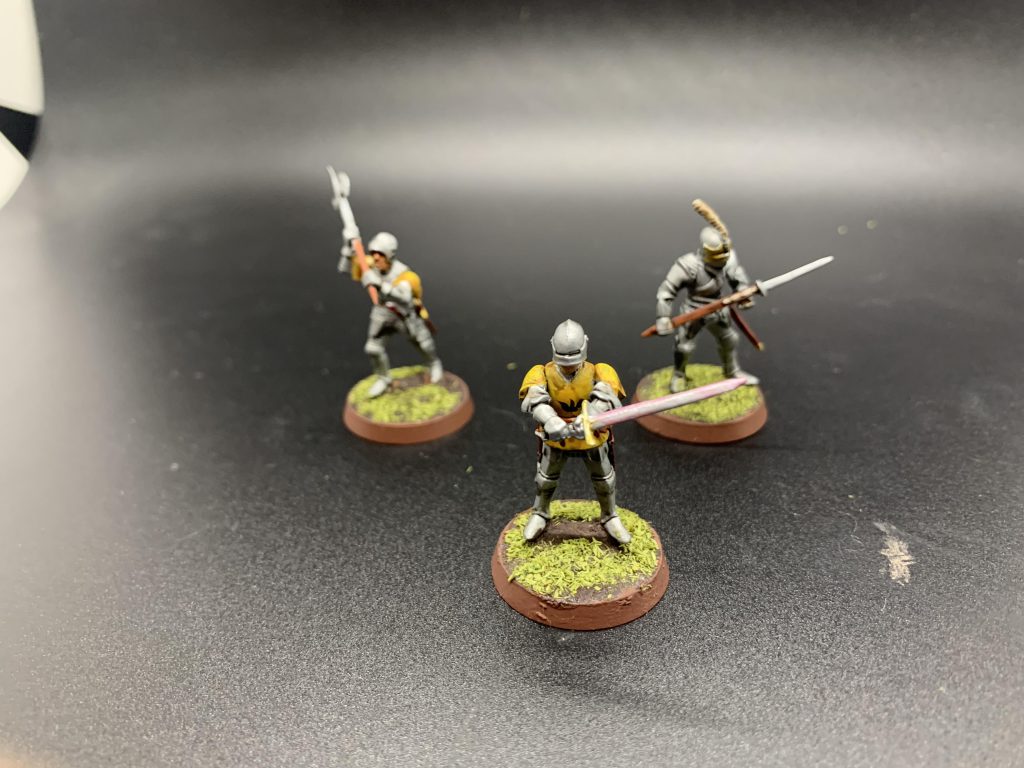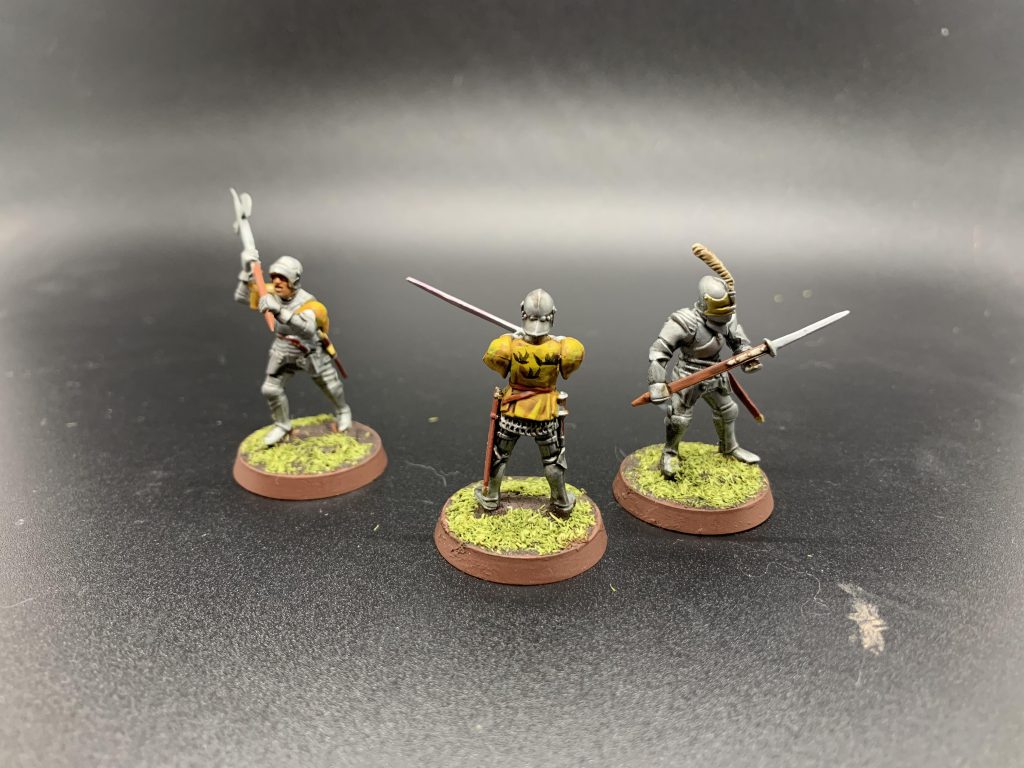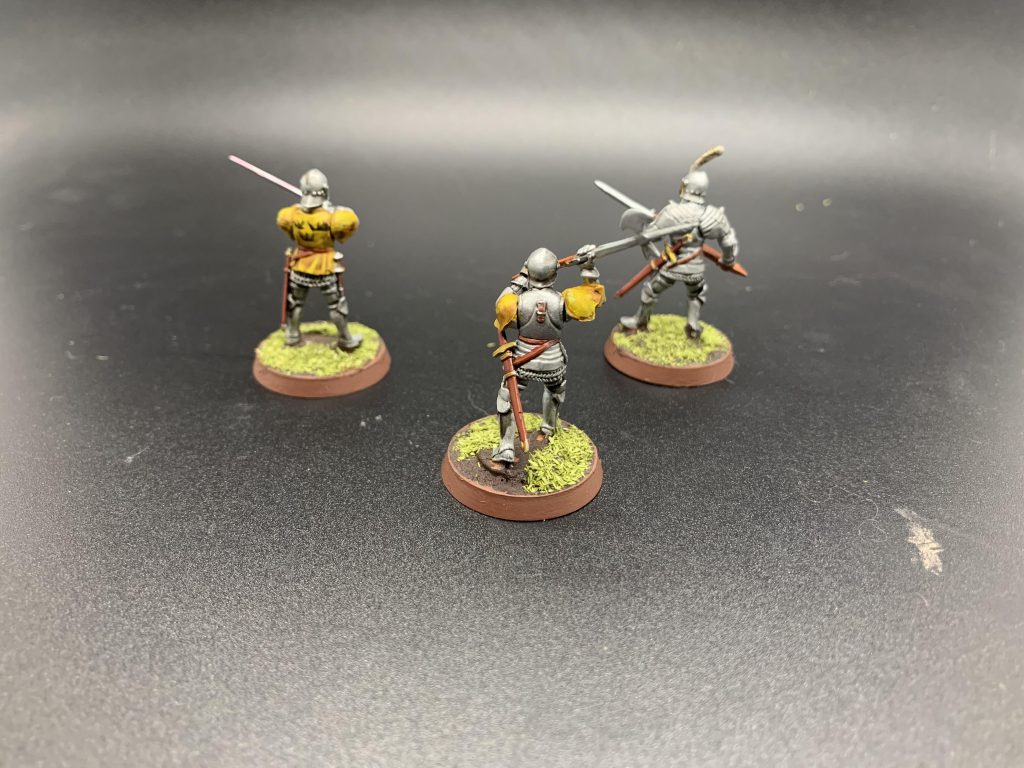In this week’s Historicals, Enz0_da_Baker is reviewing the Foot Knights (1450-1500) kit from Perry Miniatures.
One of the worst parts of constantly reorganizing my hobby space is that I do often misplace boxes I reserved for my distant backlog. One of the benefits of this is that sometimes I find something I bought ages ago, and now it’s like I got it for free.
So, imagine my excitement when I found a package from Perry Miniatures from November 2020. I’d given myself a late/early Christmas gift of foot knights! And what a box it is, with 38 miniatures in it for about $20.
If you’re familiar with Perry Miniatures, you know that they have an awesome range of plastics for Late Medieval, American Civil War, and the Napoleonic era. They also have a metal range for those wars as well as a lot of other eras. Their plastic kits are always great, and I’ve found they normally have a lot of options, and this set is a good example of this.
The box is 6 sprues of foot knight infantry with polearms, and one small sprue of a dismounted king—or some other crowned warrior—and flag bearer. I would point out that if you buy multiples of this box, you end up with more kings then you might need, but it’s still an awesome deal for dismounted men-at-arms at 28mm.
Looking at the Sprue
Now, six of the same sprue could risk getting repetitive, but there’s 10 head options, and 11 weapon sets, so you’re going to get a lot of variety here. You’ll notice the box suggests these knights are for specifically AD 1450 to 1500, and they’re coded on the Perry site for their War of the Roses set. The fact that these dismounted knights are all armed with pole weapons—namely pole axes and halberds with one neat war spike—is showcasing their value at fighting off mounted knights. I’ll be using mine for a Neapolitan/Spanish force in the Italian Wars.
The king and flag bearer sprue has a couple head options, and the king has a nice tabard. The crowned helm is well sculpted. You can also add a spare head from one of the other sprues to replace the crowned helm of the king—this will get more use out of that sprue if you get multiple boxes.

Building
The building guide labels two bodies wearing tabards that pair well with Halberd #6, as well as seven groupings of arms that pair together. The instruction guide shows us which helmets are of a typical German sallet, as well as a plumed helmet typical of Burgundian men-at-arms, though I’ve also seen these in many illustrations of Italian knights and condottieri mercenaries. There are no bare heads. My only major building complaint comes from helmet #8. It’s an open-faced helm with the visor as a second part. The inside of the visor attaches to the sprue, and I was never able to get a clean cut or snip that didn’t ruin the visor part. I’ll take some of the blame for not having sharp enough hobby tools, but this part is a bit of a pain.
Building otherwise is easy enough. I recommend plastic glue, because you’ll like being able to shift arms slightly so that you can rest weapons together. The models can be posed with some variety: weapons either held out in front at the ready or raised overhead as if to deliver a killing blow. I always find attaching the sheathed swords to be a bit of a pain with Tamiya Extra Thin, so I use Citadel Plastic Glue to get a solid dollop on. There are enough sheathed swords if every knight has a pole arm, but there are two options for wielding swords and only one empty scabbard. Unless you use both sword options off every sprue, you’ll be able to use extras from across the box.
There are no major mold lines on my kit, and I find that building all 36 of them goes by rather quickly. Like many 28mm models that aren’t “Heroic” scale, they have integrated bases. Perry’s bases are very small, and easily leveled up by whatever basing material you use. I am basing these guys individually on beveled 25mm rounds so I can magnetize the bases. Certain game systems will call for them to be on communal bases or square bases, but I have painted movement trays for that.
Painting

Airbrush privilege warning: I’m going to prime all these guys black, and then I’m going to airbrush them all over with Vallejo Model Air Color (VMAIC) Steel. It’s a very bright steel, Vallejo’s Model Air Color metallics and Metal Colors paints look great either airbrushed or paint-brushed, and this will get these guys done quick. One could also do it fast by dry brushing on a bright steel color (VMAIC Steel, Citadel Iron Hands Steel) or using a rattle can like Army Painter Plate Mail Metal. I would not use a gunmetal tone like Citadel Leadbelcher or AP Gunmetal. The armor of the day is regularly depicted as very shiny, even white. If you do use a rattle can and find that it’s hydrophobic after drying, hit the models with a matte varnish.

After that, base coats are 90% done for most models, and 70% for those with tabards. The armor will then be washed with Nuln Oil, because the new formula is amazing for the shallow details on these. After the wash dries, I’m just going to highlight back up with VMAC Steel. Citadel Stormhost Silver would also work well.
I’m hitting the straps and scabbards with Vallejo Model Color (VMC) Cavalry Brown for a warm leather, washed with Agrax, and then highlighted up with VMC Red Leather. VMC Mahogany gives me a dark, cool brown, and I’ll highlight that with VMC Saddle Brown. Handguards for swords will get some different shades of gold and bronze.

A few models have some visible faces. My go-to paints for European faces are VMC Beige Red and Rose Brown (I like that it sounds like its butthole color). There’s not much visible to highlight, but a little bit of Reikland Fleshshade followed by a highlight of the basecoat mixed with white will do the job.
As I said, two bodies on each sprue have a tabard, the cloth shirt that one would wear over their armor, normally showing a coat of arms. The instructions have several suggestions of famous knights. Some of these would be insane to free hand: Frenchman Jean Bureau had chevrons and wine vases. On this guy here, I went with a yellow tabard with three black crowns. They’re supposed to be crowns, at least. Having gone with the bright steel as the base coat all over, Averland Sunset goes on in two thin coats with excellent coverage. In the past year or so, every single pot of Citadel yellows I’ve used has been great. I wash the tabard in Agrax, highlight it with Flash Gitz, and then do the crowns with a VMC Black. These tabards are a fantastic canvas for anyone with a lot of patience to test out some freehand. Checks, stripes, quartered patterns, and animals are all typical.
Adding Some Details
Beside the tabards, you’re going to have a lot of steel, which can all blur together, especially in a large game. The plumed helmet on each sprue is nice to break up the monotony. The feather could have been dyed any color; Perry suggests blue and white for Burgundians. Another way to add some color is to paint the sallets different shades of red. There are examples of helms with a velvet coat over the metal. I recommend various deep reds: Citadel Screamer Pink, Khorne Red, and Gal Vorbak Red would all look great. I’d argue that rich purples could also work.
Some gold on the shoulders, helm visors, and roundels will add a little pop across the range.
Basing
I love seeing a model with a small diorama for the base, but I don’t like basing that much. For these fools, first I lay down a mix of Stirland Mud and Stirland Battlemire to bury the stand of each model, then I just put some Army Painter Battlefield Grass down with some PVA glue. Spray varnish will keep all this grass held down. The mud and flattened grass will work well for… any European battlefield for the most part. A glossy wash can make the mud look wet. If you have old Nuln Oil Gloss that will work, but you can also mix some gloss varnish into the new formula.
Flags
The single sprue with the king and flag holder has some head options, and the flagpole is just a rod for you to wrap paper flags around. The instruction guide also comes with 4 large banners and 13 small flags, allowing you to represent the coat of arms of Yorkists, Lancastrians, English and French monarchs, as well as Danish, Imperial, and Swedish knights. Simply cut out the paper and wrap it around the flagpole after painting. I recommend using a glue stick as you can maximize adherence. Spray varnish will protect the flag.

Final Verdict
These models are great, and I cannot stress enough how there are 38 guys for insanely cheap. Yes, if you want to have 500 knights for a mass battle, you’ll get way more kings then you need, but you’ll make use of those knights and flag bearers. If you want to add something new for the heads, Perry’s offers metal Swiss, general European, and Italian heads in their European Armies metal range (codes EA6, EA7 and EA23 respectively). I haven’t done this myself, but I’ve heard of others using the heads from Warlord’s plastic Landsknecht kits to have full armored mercenaries.
All in all, it’s a great kit. If you have a way to base coat that metal quickly, the rest of the model paints up very fast. These models will work perfectly for War of the Roses and elite forces in an Italian Wars army.
Have any questions or feedback? Drop us a note in the comments below or email us at contact@goonhammer.com.


